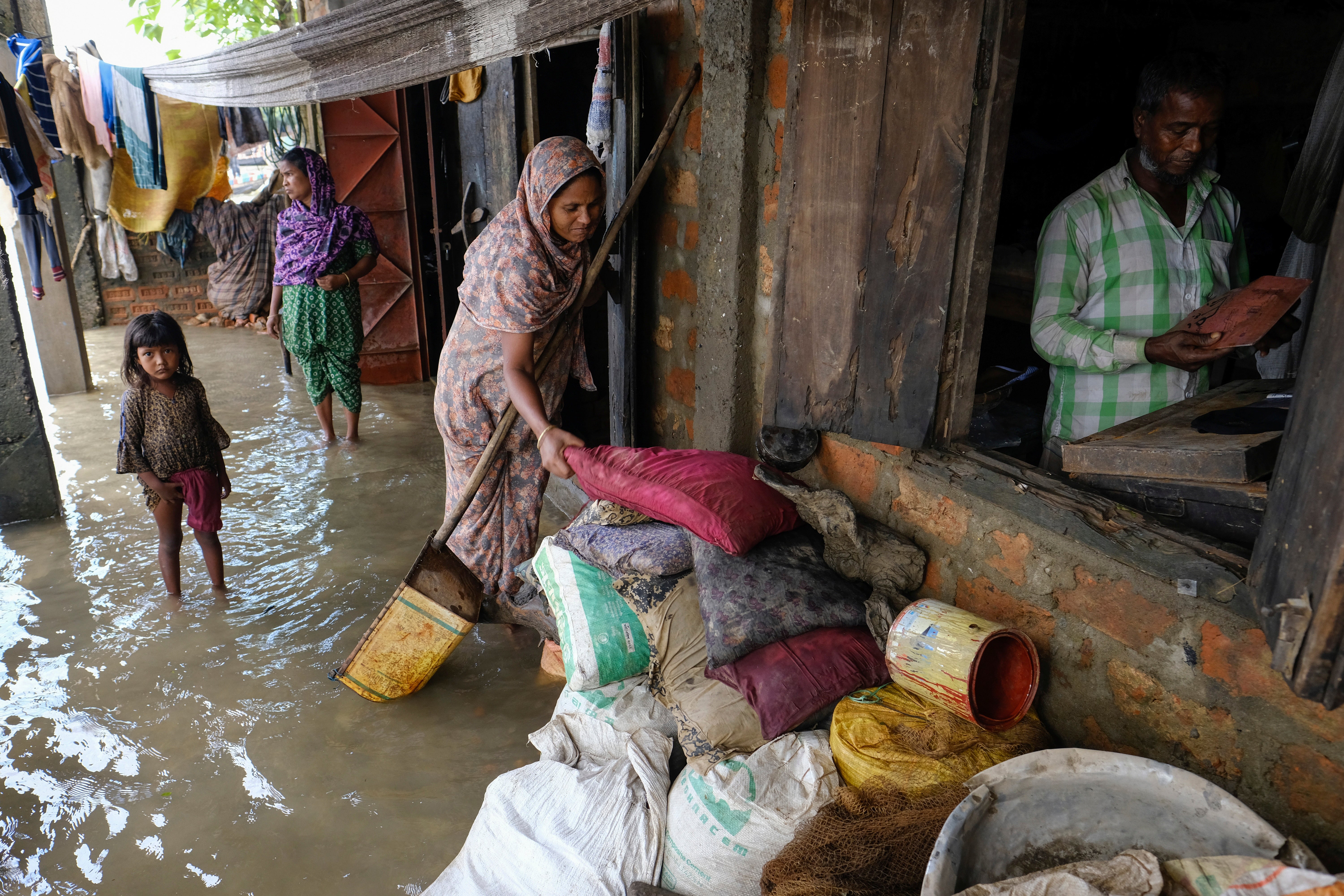All of Bangladesh is drinking water containing unsafe levels of carcinogenic arsenic
Chronic arsenic poisoning not limited to Bangladesh, researchers say
Nearly half of the water that Bangladeshis are drinking contains dangerously high levels of arsenic, a new study has revealed.
A team of scientists found that 49 per cent of the water, which an overwhelming majority of the population depends on, contains unsafe limits of the carcinogenic contaminant.
The discovery highlights a looming public health crisis in the South Asian country, which routinely faces heavy flooding and is one of the most vulnerable to the impacts of a spiralling climate crisis.
In 2018, Bangladesh was left one-third underwater after Cyclone Amphan. On average, 21 per cent of the country gets flooded annually due to intensifying monsoon rains.
The increased levels of arsenic were directly linked to rising sea levels and more severe seasonal flooding, according to the study published on Wednesday in journal PLOS ONE.
When saltwater from the ocean mixes with freshwater, it causes arsenic to be released from sediments.
The researchers collected water samples from wells across Bangladesh to test for oxygen concentration, pH, and temperature to understand the dynamics behind the arsenic release.
They found that approximately 49 per cent of Bangladesh’s groundwater had arsenic concentrations exceeding the 10 micrograms per litre ( μg/L) safe limit set by the World Health Organisation for drinking water.
In some samples, the arsenic concentration recorded was as high as 450μg/L - exceeding the WHO guidelines by 45 times.

The crisis is not limited to Bangladesh. Dr Seth Frisby, the author of the study and a professor at Norwich University said the chronic arsenic poisoning has also been impacting residents of India’s West Bengal, a state neighbouring Bangladesh.
“The same chemical processes from rising sea levels that release arsenic from sediments into Bangladesh’s drinking well water will also very likely release arsenic from sediments into West Bengal’s drinking well water,” he told The Independent.
Dr Frisby said the impacts of arsenic poison were first identified on the subcontinent in West Bengal 11 years before it was discovered in Bangladesh.
He raised concerns that “the drinking water standards for arsenic in both India and Bangladesh are many decades out of date,” which makes the population even more vulnerable.
The findings signal a public health emergency. Prolonged arsenic exposure can cause severe health issues, including cancers and vascular diseases.
In response to findings, Jamie Williams, senior policy advisor for poverty reduction at Islamic Relief, said Bangladesh is already suffering from water shortages due to pollution from pesticides, particularly in fishing areas. The charity is currently running awareness campaigns in the country on unsafe drinking water.
“Bangladesh is one of the most vulnerable countries to climate change due to its population density, and limited low-lying land area dominated by major rivers that drain the Himalayan mountains and foothills,” he told The Independent.
“Many people are landless and forced to live on and cultivate flood-prone land; waterborne diseases are prevalent.”

The climate crisis, largely caused by the burning of fossil fuels, is projected to cause sea level rise of around one and a half foot on average in Bangladesh by mid-century. Yet two-thirds of the country is less than 15 feet above sea level.
Bangladesh is also being hit by more powerful cyclones which unleash disastrous flooding, and the monsoon season adds to this burden with increasingly intense levels of rainfall, according to a 2019 study.
These factors are expected to make safe drinking water a scarcer resource for the 165 million Bangladeshis living in low-lying areas.
The researchers called for faster development of possible solutions including water purification technologies and infrastructure to prevent groundwater contamination.
Join our commenting forum
Join thought-provoking conversations, follow other Independent readers and see their replies
Comments
Bookmark popover
Removed from bookmarks